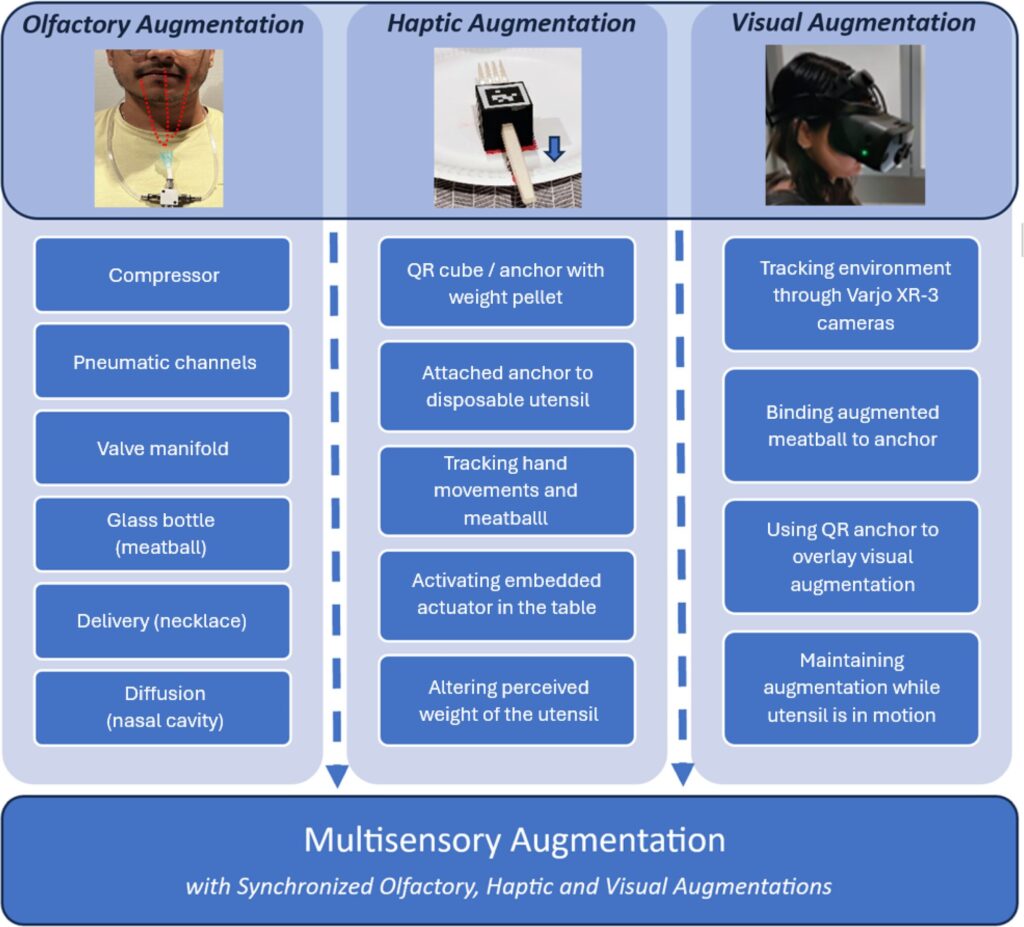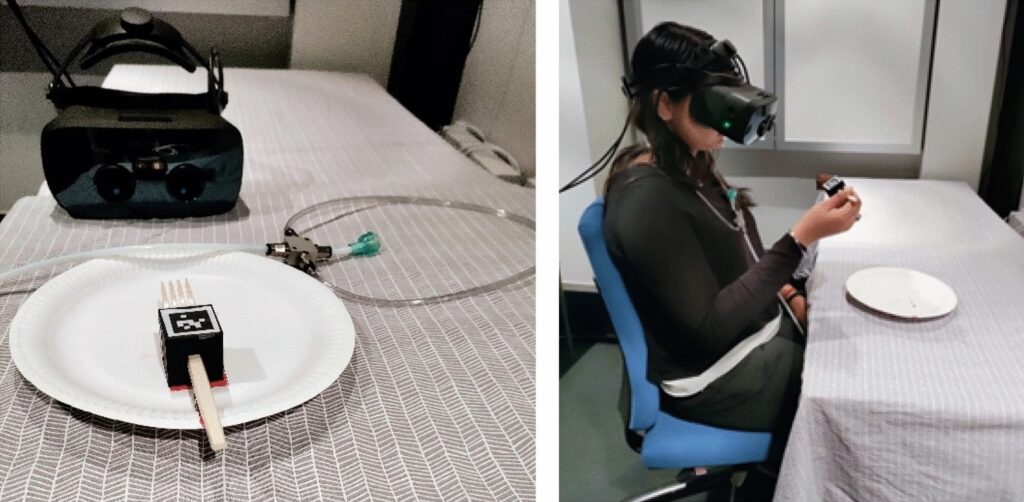Could Extended Reality Be A Silver Bullet for Plant-Based Meat?
4 Mins Read
Researchers in Finland are using extended reality to create a multisensory eating experience and enhance the appeal of plant-based meat alternatives.
Forget CRISPR, fermentation or 3D printing – maybe all we need to improve the taste and texture of meat analogues are just a fork and a headset.
Scientists at Finland’s Tampere University and the VTT Technical Research Centre are proposing the use of extended reality (XR) to make climate-conscious food even more attractive to consumers.
XR includes all environments where reality means the virtual world, including augmented reality, virtual reality, and mixed reality. In the study published in the Journal on Multimodal User Interfaces, the researchers argue that this technology can artificially modify human sensations, helping sweeten the appeal of meat-free products.
“This could be one way of facilitating more ecologically diverse food production and, at the same time, encouraging people to eat healthier,” said Roope Raisamo, a human technology interaction professor at Tampere University.
XR meatballs feel heavier, bigger, and more filling

Raisamo has been supported by funding from the Research Council of Finland for research on XR in different applications for over two decades. In this project, he teamed up with VTT’s Nesli Sözer and colleagues to create eating experiences and new food products that would boost satiety and pleasure while being kind to the planet.
The team developed a multisensory augmentation system for the project, which comprised an XR headset, a prototype olfactory necklace display, and a fork that can provide haptic feedback and contains a visual QR code marker.
This system made it possible to augment different food products that could be eaten with the fork. The headset and necklace helped alter the size, appearance and scent of the food item where needed, while the fork was used to modify the perceived weight of the dish to investigate how this plays into people’s perception of feeling full.
“The premise was to bring two previously rarely collaborating disciplines together to do something completely new,” Raisamo explained. He and his colleagues then conducted an experiment with 40 participants, who ate plant-based meatballs made from pea protein, and blended meatballs containing chicken, beef, pork, and soy protein.
They found that introducing meat-like flavours and fragrances to the plant-based balls changed the eating experience. The augmented meatballs were perceived as bigger and heavier, but taste-testers did not notice a stronger aroma. They found the scent of the modified vegan meatballs less appealing than the non-augmented versions, and the impact on taste perception and overall experience was similar.
Multisensory changes could help alt-protein perception

One of the study’s limitations was the requirement of the fork, which meant the experiment couldn’t really be tested on foods traditionally eaten without it, such as a burger or a chicken nugget.
But the researchers argued that the study could have significant implications for food manufacturers, especially those exploring alternative proteins. It may, for example, lead to foods like seaweed becoming more widely used in food preparation.
“The positive ratings for haptic and visual augmentations imply that adding multisensory enhancements can elevate the perception of food items. This could be a pivotal strategy for industries aiming to promote plant-based alternatives by making them as appealing and tasty as the traditional meat-based products,” the study stated.
“By leveraging multisensory augmentations, businesses might be able to drive consumer preference towards more sustainable and environmentally friendly food options,” it added, noting that the results could also help design experiences to mitigate food waste – another major climate change contributor.
“The results allow for the optimal use of extended reality systems through human-AI cooperation. We measure cognitive responses, task completion and user experience when a user interacts with an AI-based extended reality,” explained Raisamo.
“We combine cognitive space modelling, detection, personalisation and forecasting with modelling, contextual awareness and adapting interaction methods,” he said, adding that XR-based olfactory and haptic sensations could be used in marketing in the future too, with multisensory modules that can be added to users’ devices.”
“Once the XR headsets become lighter everyday products with multisensory stimulation capabilities, there is a promise that they may be used to facilitate healthier and more sustainable food choices while ensuring enjoyable eating experiences,” the study said.



